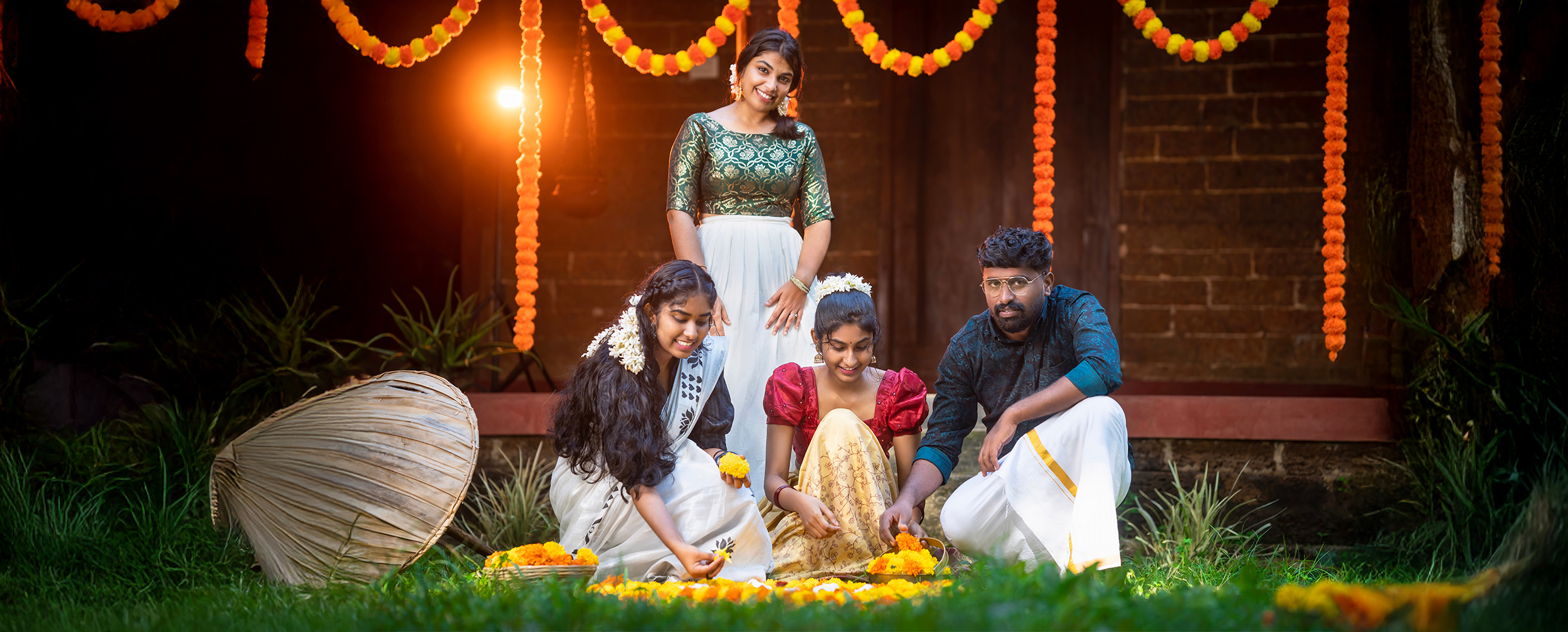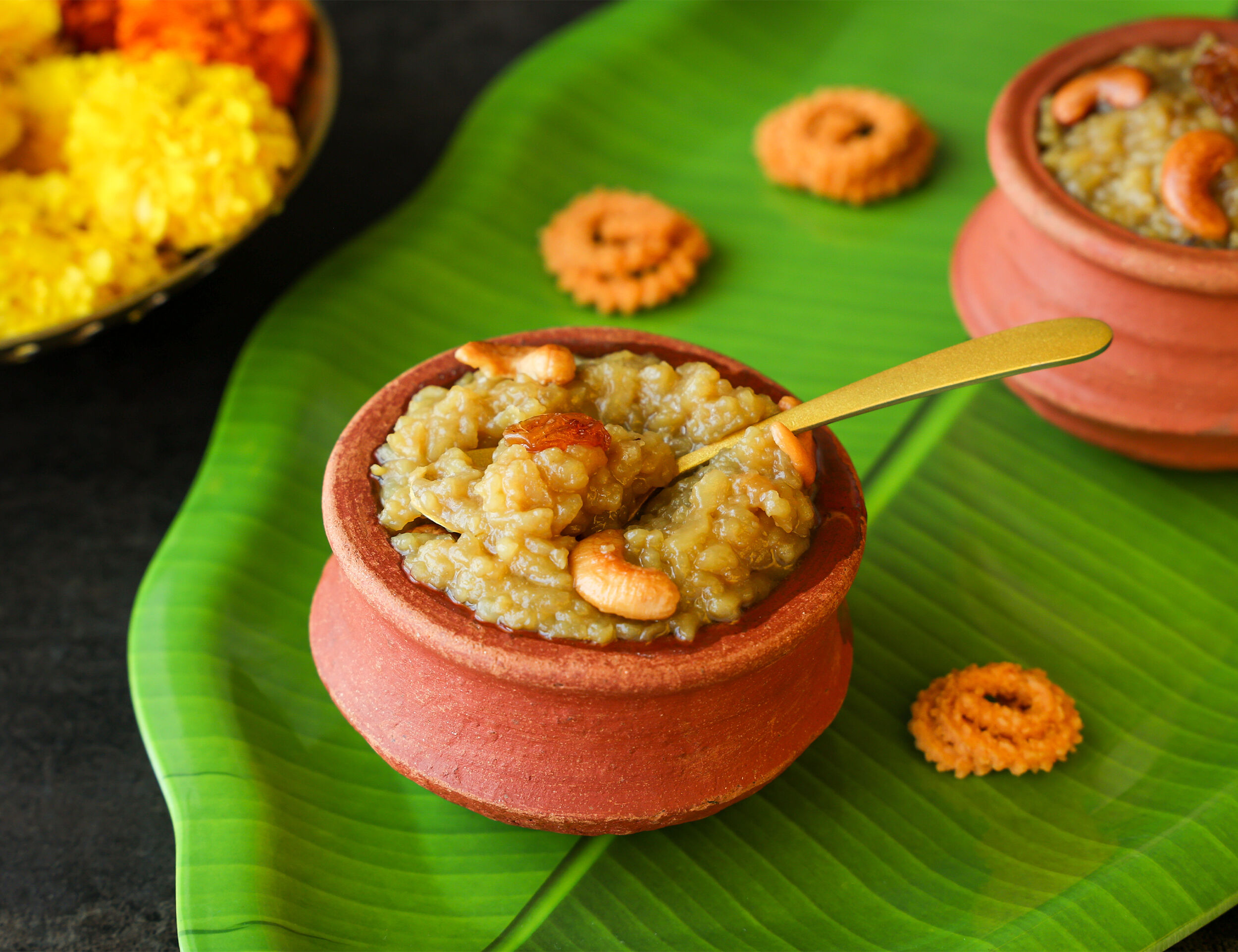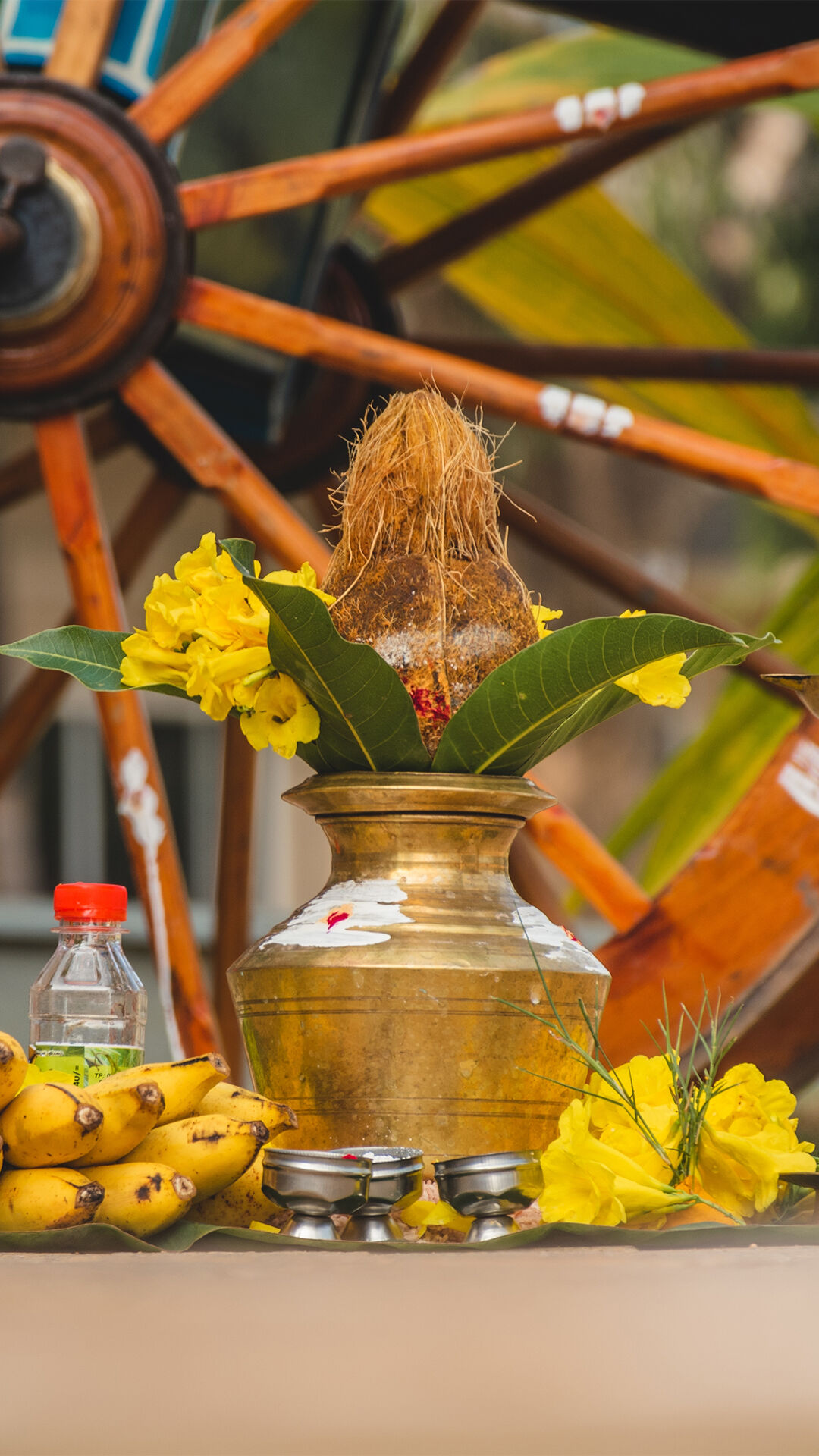STORIES BY DIWAS

Lifestyle
How is Pongal Celebrated: Guide to Tamil Nadu's Biggest Festival
Date 10 January 2025 Reading time: 7-10 mins
A crisp January dawn in Tamil Nadu and the aroma of sweet pongal wafts through homes adorned with intricate kolams. Families gather around bonfires, their laughter mingling with the chants of "Pongalo Pongal!" This is Pongal—a four-day harvest festival steeped in age-old traditions, yet with a vivacious spirit that's quintessentially Tamil.
If you've ever wondered how Pongal is celebrated across the state, buckle up for a sensorial ride through its rituals, foods, and festivities. From the symbolic discarding of old things on Bhogi Pongal to the reverence for cattle during Mattu Pongal, we'll uncover the layers of this beloved festival.
So, are you ready for a celebratory deep dive?
How is Pongal Celebrated in Tamil Nadu?
Pongal is celebrated as a time of thanksgiving for the harvest and is more than just a festival in Tamil Nadu—it's a cultural extravaganza that brings together people from all walks of life. The festival spans four days, each with its unique customs and significance. Let's take a closer look at how Tamilians celebrate Pongal:
Preparation for Pongal
The excitement for Pongal begins well before the actual festival. Pongal is celebrated with great enthusiasm, and homes buzz with activities as people clean every nook and cranny, discarding old and unused items. The preparation is not just physical, but also mental—a time to let go of the past and embrace new beginnings. Women draw intricate kolams (rangoli) at the entrance of their homes, using rice flour and coloured powders. These geometrical patterns are believed to bring prosperity and ward off evil. Houses are also decorated with mango leaves and marigold garlands, lending a festive air.
As Pongal approaches, markets overflow with sugarcane, turmeric, ginger, and other fresh produce. Pongal is celebrated with vibrant fervor, and families stock up on new clay pots, in which the traditional Pongal dish will be cooked. The stage is set for the festivities to unfold.
Day 1: Bhogi Pongal
The first day of Pongal is called Bhogi Pongal, dedicated to Lord Indra, the god of rain. The day is all about cleansing and renewal. People discard old clothes, mats, and other household items, often burning them in a bonfire. This symbolic act signifies letting go of the old and welcoming the new. Children dance around the fire, singing folk songs and playing with firecrackers.
In some households, a special puja is performed for the cattle. They are given a bath, their horns are painted, and they are adorned with colourful garlands. This ritual is a prelude to the Mattu Pongal celebrations that follow.
Day 2: Thai Pongal
The second day, Thai Pongal, is the main festival day, dedicated to the Sun God, Surya. The day begins early, with people taking a holy bath and wearing new clothes. The highlight of the day is the preparation of the Pongal dish, a sweet concoction of rice, moong dal, jaggery, and milk. Milk is boiled in a new clay pot until it froths and overflows, a moment marked by cries of "Pongalo Pongal!" This ritual is believed to bring abundance and prosperity.
The Thai Pongal dish is first offered to the gods and then shared among family and friends. The feast also includes other traditional delicacies like vadai, payasam, and medu vada. People visit temples to offer prayers and seek blessings for a bountiful harvest.
Day 3: Mattu Pongal
The third day of Pongal is dedicated to cattle, particularly cows and bulls, which are integral to agricultural life. The day is called Mattu Pongal, translating to "Pongal for cows." Cattle are given a luxurious bath, their horns are painted, and they are adorned with colourful beads, bells, and garlands. They are then fed the Pongal dish and taken out in a procession around the village.
In some parts of Tamil Nadu, Mattu Pongal is celebrated with Jallikattu, a traditional bull-taming sport. The sport involves a bull being released into a crowd of people, and participants attempt to grab the bull's hump and hold on for as long as possible. Jallikattu is seen as a way of honouring the bulls' strength and agility.
Day 4: Kaanum Pongal
The fourth and final day of Pongal is called Kaanum Pongal, meaning "Pongal that is seen." It is a day for family reunions and outings. People visit relatives and friends, exchanging gifts and greetings. Many families also go on picnics or trips to nearby temples and tourist spots.
One of the unique traditions of Kaanum Pongal is the preparation of kolams (rangoli) outside homes. Women draw elaborate designs using coloured rice flour, depicting themes of nature, folklore, and mythology. These kolams are meant to welcome guests and bring good luck.
Pongal Rituals
Pongal is a festival steeped in rich rituals and symbolism. Below are some of the key Pongal rituals associated with the celebration:
- Bhogi Mantalu: On Bhogi Pongal, people burn old and unwanted items in a bonfire, symbolising the discarding of negative energy and thoughts.
- Kolam: Women draw intricate kolams (rangoli) using rice flour, symbolising welcome and prosperity.
- Pongal Dish: The preparation of the Pongal dish is a key ritual, with the overflowing of milk symbolising abundance and prosperity.
- Sun Worship: Thai Pongal is dedicated to the Sun God, Surya, and people offer prayers and thanks for a bountiful harvest.
- Cattle Worship: Maattu Pongal involves the worship of cattle, which are decorated with garlands and fed the Pongal dish as a mark of gratitude for their role in farming.
- Family Reunions: Kaanum Pongal is a day for family reunions, with people visiting relatives and exchanging gifts.
How to Celebrate Pongal Festival at Home
If you're wondering how to celebrate pongal festival at home, here are some ideas to get you started:
- Decorate your home: Adorn your entrance with colourful kolams, mango leaves, and marigold garlands. You can also place a clay pot with sugarcane and turmeric plants near your door.
- Prepare the Pongal dish: Boil milk in a new clay pot, and add rice, moong dal, jaggery, and ghee. Let the milk overflow, and shout "Pongalo Pongal!" as a mark of abundance.
- Wear traditional attire: Dress up in traditional Tamil attire, such as a dhoti and kurta for men and a saree or pavadai for women.
- Offer prayers: Create a small altar with images or idols of the Sun God and other deities. Offer the Pongal dish and other delicacies as prasad.
- Enjoy a feast: Prepare a delicious spread of traditional Pongal dishes, such as vadai, payasam, and medu vada. Share the meal with your loved ones.
- Exchange gifts: Buy new clothes and gifts for your family and friends. Pongal is a time for spreading joy and love.
- Visit a temple: If possible, visit a nearby temple to offer prayers and seek blessings for the new year.
Final Thoughts on How to Celebrate the Pongal Festival
Pongal is a festival that celebrates the bounty of nature, the strength of community, and the joy of new beginnings. Pongal is celebrated with vibrant enthusiasm, and the four-day festival is a sensorial treat, with colourful kolams, fragrant dishes, and lively celebrations. From the cleansing rituals of Bhogi Pongal to the reverence for cattle during Mattu Pongal, each day holds a special significance.
As we've seen, celebrating Pongal is all about coming together with loved ones, expressing gratitude, and embracing the festive spirit. Whether you're in Tamil Nadu or celebrating at home, the essence of Pongal lies in its traditions.
This Pongal, while decorating your home, don a stylish kurta from Diwas for that perfect festive look, prepare a delicious sweet Pongal, and immerse yourself in the joyous celebrations.
May the festival bring you abundance, prosperity, and countless moments of togetherness.
Happy Pongal!



